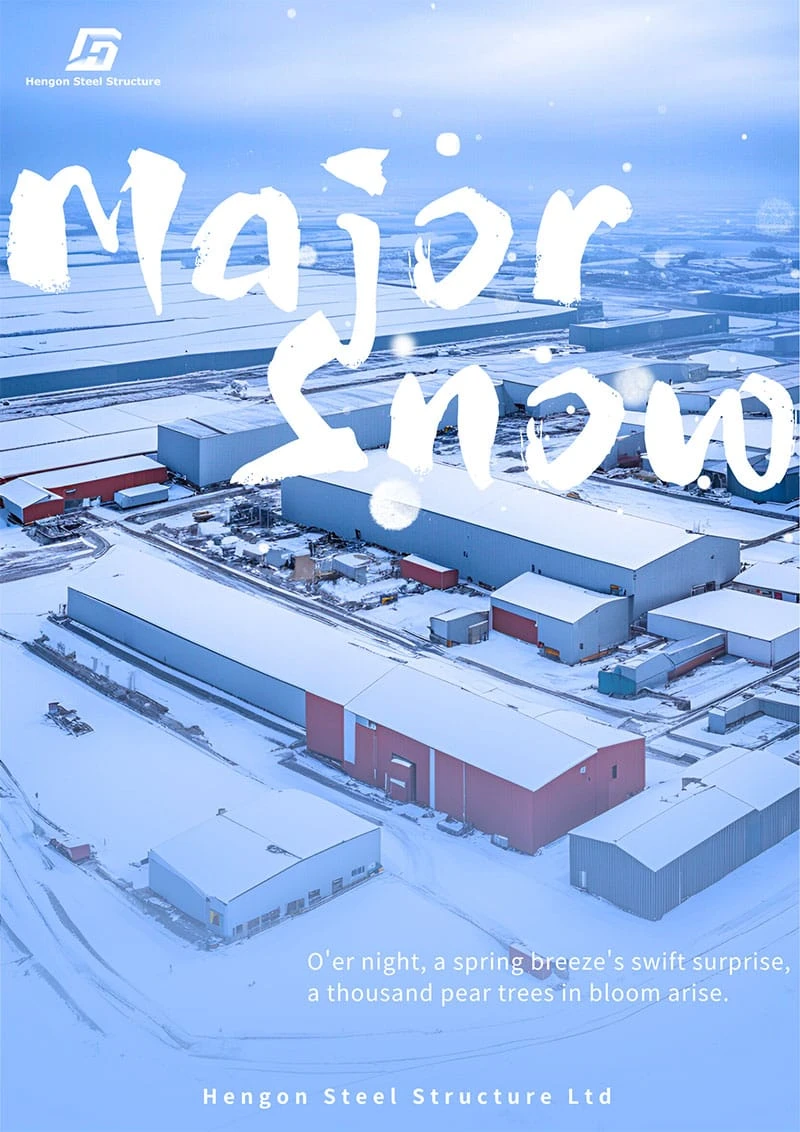During the Major Snow, steel structures become not only part of the city skyline but also works of art within the winter scenery. Snowflakes falling on steel beams and trusses give these industrial age masterpieces a soft coat. With the arrival of severe cold weather, how to construct steel structure construction projects in winter has become a key issue for customers to consider when constructing projects. Below, Hengon Steel Structure outlines the necessary precautions:
Multi-layer Welding: For welding thick steel plates at negative temperatures, multi-layer welding is essential to reduce welding stress and deformation.
Weld Cladding: Welds are applied layer by layer from bottom to top, with each weld completed in a single pass to avoid defects and ensure quality.
Welding Interruption Processing: If welding is interrupted, any defects must be removed before resuming welding to ensure joint quality.
Arcing Prohibition: Striking arcs on welding parent materials is strictly forbidden to prevent damage and defects.
Protective Shed Construction: Protective sheds are constructed on snowy days or in high winds to shield welding operations from environmental factors.
Treatment of Unqualified Welds: Unqualified welds must be removed and re-welded to meet basic welding quality control requirements.
Painting Process Experiment: When ambient temperatures fall below 0℃, a painting process experiment is conducted to ensure proper paint curing at low temperatures.
Surface Treatment Before Painting: Prior to applying anti-corrosion paint, surfaces must be cleaned of rust, oil stains, burrs, etc., to ensure paint adhesion.
Painting Environment Requirements: Painting should not be performed on snowy days or when components have thin ice to prevent paint damage.
Winter Transportation and Stacking: Anti-slip measures are essential when transporting and stacking steel structures in winter to ensure that the stacking site is flat, solid, and free of puddles and ice.
Component Stacking: Components of the same model must be stacked level to prevent slipping.
Quality Re-inspection:Prior to installation, steel structures must be re-inspected per negative temperature requirements, with any missed or deformed components during manufacturing, transportation, or stacking repaired and corrected.
Safety Measures for Hoisting: When hoisting steel components with steel cables, include anti-slip pads and securely tie node plates, clamps, and other hoisted objects with ropes to ensure hoisting safety.
Installation Sequence and Welding Process: Develop an installation sequence chart and welding process for steel components based on temperature conditions. Adhere strictly to the prescribed order during construction, avoiding simultaneous welding at both ends of a component to prevent stress-induced deformation.
